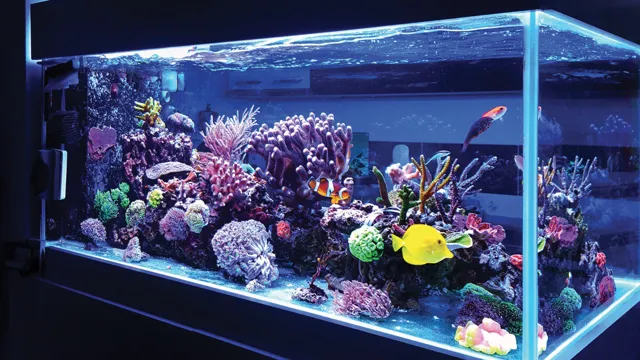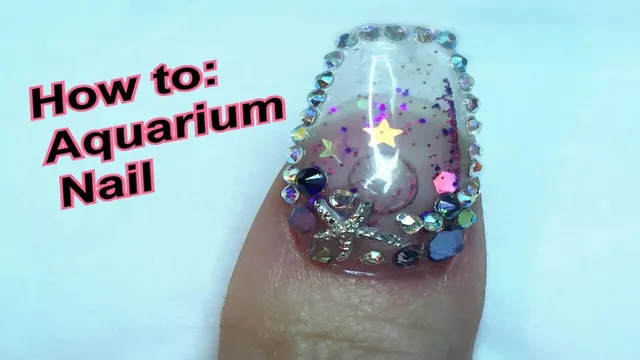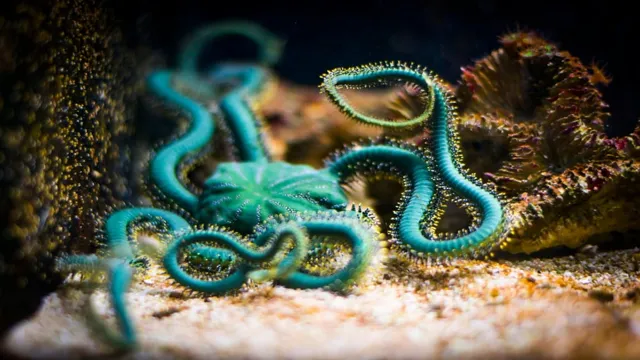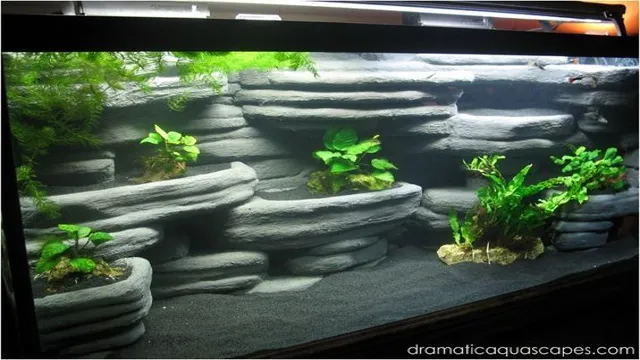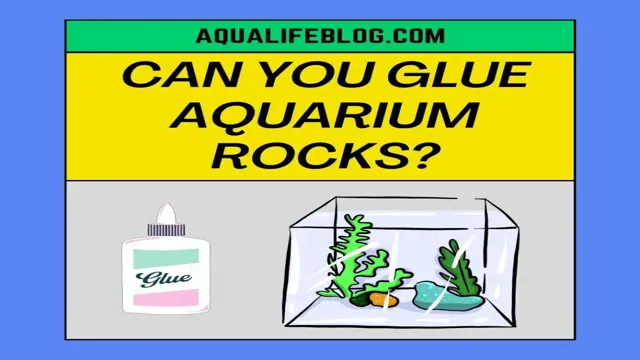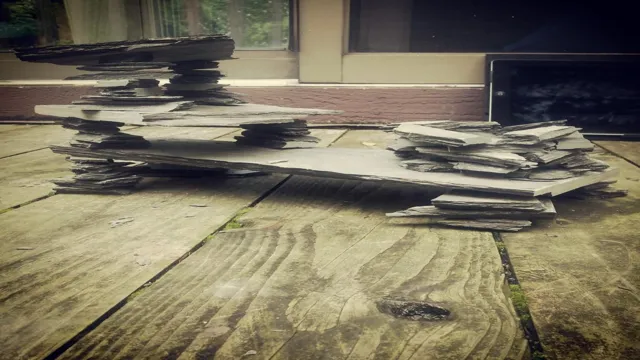If you’re interested in creating a beautiful and tranquil underwater oasis, then learning how to make a saltwater aquarium might be just the thing for you! But where do you even begin? With all the different types of fish, plants, and equipment available, it can be overwhelming to know what to purchase and how to set everything up properly. Don’t worry, though – we’ve got you covered! In this post, we’ll walk you through the steps you need to take to create a stunning saltwater aquarium that you can enjoy for years to come. So let’s dive in!
Introduction
If you’re interested in setting up a salt water aquarium, there are a few key steps to follow to ensure the success of your new aquatic habitat. First and foremost, it’s important to select the proper equipment, including a high-quality filtration system and a heater to maintain the appropriate temperature. Next, you’ll need to choose the right type of salt mix and begin cycling the tank to establish the necessary biological balance.
Once your tank is ready for inhabitants, you can carefully select fish and other aquatic creatures to add to your new ecosystem. Maintaining a salt water aquarium can be a rewarding and satisfying hobby, as long as you take the time to set it up properly and provide ongoing care for your aquatic inhabitants. With a bit of patience and attention to detail, you can create a thriving, vibrant salt water aquarium that will provide hours of enjoyment and fascination.
What is a Salt Water Aquarium?
A saltwater aquarium is a type of aquarium that houses marine life like fish, corals, and invertebrates in a saltwater environment. Unlike freshwater aquariums, saltwater aquariums require a more complex setup and maintenance due to the delicate nature of the marine creatures. The water chemistry, lighting, and temperature are critical factors that must be monitored closely to maintain the health of the inhabitants.
Setting up a saltwater aquarium can be an expensive venture due to the cost of equipment and livestock. However, the opportunity to create a piece of the ocean at home and observe the beauty of the marine life can be a rewarding experience. Whether you’re a beginner or seasoned hobbyist, a saltwater aquarium can provide an exciting and challenging adventure in the world of aquatics.
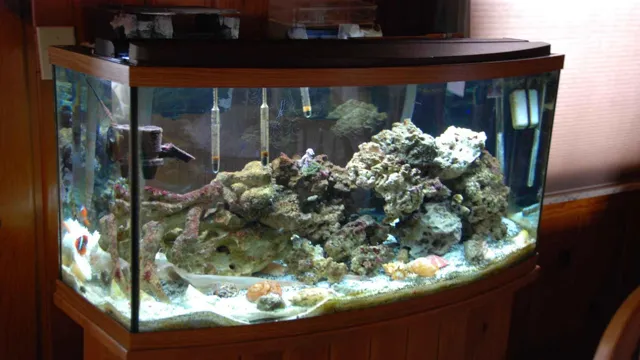
Benefits of Having a Salt Water Aquarium
Salt Water Aquarium As a pet owner, you would definitely want the best environment for your beloved pets. If you are a fan of marine life, then you must consider having a saltwater aquarium in your home. Saltwater aquariums can be a great addition to your home, not only because of their aesthetic appeal but also for the plethora of benefits they offer.
These aquariums provide a unique opportunity to get up close with marine creatures and learn about their behavior patterns. Plus, they can be a stress-relieving hobby for people of all ages. With advances in technology, setting up a saltwater aquarium has never been easier.
Furthermore, with the appropriate care, these aquariums can last for years, providing you with countless hours of enjoyment. The saltwater aquarium can be a source of peace and tranquility in your home while also bringing you closer to the magnificent world of marine life.
Setting up a Salt Water Aquarium
Setting up a salt water aquarium can be a daunting task for beginner hobbyists, but it’s worth the effort once you see your vibrant and exotic marine creatures swimming gracefully inside it. First and foremost, you’ll need to decide on the tank’s size and location, as well as the equipment that will support it. It’s important to ensure that all the components in your tank, including the filtration system, heater, and lighting, are appropriate for a saltwater environment.
After you’ve set up your equipment, you’ll need to mix your saltwater. Fill your tank with fresh water first, and then gradually add the salt mix while checking its salinity levels using a hydrometer or refractometer. Once you’ve reached the target salinity level, you can add live rock and sand to your aquarium to aid in biological filtration.
After the rock and sand have settled, you can introduce your first fish. It’s essential to monitor your water quality regularly and perform necessary maintenance procedures like water changes and equipment cleaning to keep your saltwater aquarium healthy and thriving. With a bit of patience and care, you can create a stunning saltwater aquarium that will be the envy of your fellow hobbyists.
Choose the Right Tank Size and Location
When it comes to setting up a salt water aquarium, one of the most important decisions you’ll make is selecting the right tank size and location. The size of your tank will directly impact the number and types of fish and other creatures you can keep. It’s important to choose a tank that’s not too small or too large for your space, as either extreme can lead to problems. (See Also: How to Get to Camden Aquarium from Edison NJ: Step-by-Step Directions)
As a general rule, it’s best to choose the largest tank you can afford and accommodate, as this will give your marine life more room to swim and help maintain water quality. In terms of location, choose a spot that’s free from direct sunlight and away from sources of heat or cold, such as radiators or windows. You’ll also want to ensure that the flooring can support the weight of your filled tank.
By selecting the right tank size and location, you’ll set yourself up for success as you embark on your salt water aquarium journey.
Select the Necessary Equipment
When it comes to setting up a saltwater aquarium, selecting the necessary equipment is crucial for the success of your endeavor. The first thing you need is a tank, and it should be made of glass or acrylic and hold no less than 20 gallons. A filter system is necessary to keep the water clean and free of debris, and a heater is also required to maintain the right temperature.
Lighting systems are important for the growth of plants and corals, and a protein skimmer is needed to remove excess waste. You’ll also want to invest in a hydrometer to measure salinity levels and a test kit to monitor pH and nitrogen levels. Starting a saltwater aquarium can be a bit daunting, but with the right equipment and a bit of knowledge, you’ll be well on your way to creating your own little slice of the ocean in your home.
Add Substrate and Live Rock
Adding substrate and live rock is an essential part of setting up a saltwater aquarium. Substrate acts as a base for the aquarium and provides a bed for beneficial bacteria to grow, which helps to balance the water chemistry. It also acts as a home for sand-sifting creatures like gobies, which are important for maintaining the cleanliness of the aquarium.
When selecting substrate, consider the type of fish and coral you plan to keep, as some require specific types of material. Live rock, on the other hand, serves as a natural filtration system for the aquarium and provides a habitat for beneficial bacteria, as well as marine life like corals and crabs. It’s important to choose quality live rock that has been cured and is free of pests to ensure the health of your aquarium.
By adding the right substrate and live rock, you can create a natural and thriving ecosystem in your saltwater aquarium.
Fill the Tank with Salt Water and Test the Parameters
When setting up a salt water aquarium, it’s crucial to fill the tank with salt water and test the parameters to ensure the proper environment for your marine life. To start, make sure that you have filtered and dechlorinated tap water ready to go. Then, add high-quality aquarium salt to the water, following the package instructions to create the ideal salinity level.
After filling the tank, let the water circulate for at least 24 hours before testing the parameters using a test kit. You’ll want to check the pH, ammonia, nitrite, and nitrate levels, making sure they fall within the appropriate ranges for your specific marine creatures. Testing the parameters regularly is essential to the long-term health of your aquarium, so be sure to keep up with it.
By taking the necessary steps to ensure the perfect salt water environment, you’ll be setting your aquatic pets up for a happy and healthy home.
Adding Fish and Corals
Now that you have your saltwater aquarium set up, it’s time to add some fish and corals! It’s important to research the specific needs of each species before introducing them to your tank, and to make sure each fish gets along with the others. It’s best to start with a small number of easy-to-care-for fish, such as tetras or gobies, and gradually add more as you become more experienced. When selecting corals, make sure they are compatible with your lighting and water flow, and start with hardier varieties before adding more delicate ones. (See Also: How to Fix a Sick Aquarium: Tips and Tricks to Ensure a Healthy Environment)
Make sure to acclimate your new additions slowly by slowly introducing them to your tank water over a period of hours. With patience and care, your saltwater aquarium will become a beautiful and thriving ecosystem that brings joy and wonder to your life.
Selecting the Right Fish and Corals
When it comes to selecting the right fish and corals for your aquarium, there are a few things to keep in mind. First of all, consider the size of your tank – some species of fish and coral can grow quite large, and you don’t want to end up with overcrowding issues down the line. Additionally, think about the compatibility of different types of fish and corals – some may not be able to coexist peacefully, and could end up fighting or even harming each other.
It’s also important to choose fish and coral that are suited to your level of experience – some species may require more specialized care than others. Ultimately, it’s important to do your research and make informed decisions to ensure the health and happiness of your aquatic ecosystem.
Acclimating Fish and Corals to the Tank
When it comes to adding new fish and corals to your tank, acclimation is a crucial process. The key here is to give your new additions time to adjust to the water chemistry, temperature, and light levels in your tank. Before you introduce them to your main tank, you’ll need to float the bag they came in on the water’s surface for about 20-30 minutes.
This helps equalize the temperature in the bag with that of the tank. Next, you’ll need to gradually add small amounts of water from your tank to the bag over a period of time. This will help your new fish and corals adjust to the different chemical makeup of your tank water.
Once this process is complete, you can gently release your new additions into the tank. Keep in mind that for corals, it’s best to place them in a lower flow area with moderate lighting at first, allowing them to acclimate properly before moving them to a higher flow area. A well-acclimated fish or coral is more likely to thrive in your tank for years to come.
Feeding and Maintaining the Tank
Adding fish and corals to your aquarium can be an exciting and rewarding experience, but it’s important to do it correctly. Before you add any new inhabitants, make sure your tank conditions are suitable for their needs. This means ensuring appropriate water temperature, pH levels, and salinity.
Research the species you plan to introduce to your tank, as different fish and corals have varying requirements for food, lighting, and space. When introducing new fish or corals, it’s important to acclimate them slowly to their new environment. This can be done by floating the bag they came in on the surface of the tank for 15-20 minutes or using a drip acclimation method.
Be mindful of the size and behavior of the fish you add to your aquarium, as certain species may be aggressive or territorial and can cause harm to others. Remember to always monitor your tank’s water quality and make adjustments as necessary to ensure your fish and corals thrive in their new home.
Conclusion
In conclusion, making a saltwater aquarium might seem like a daunting task, but with the right equipment, knowledge, and a sprinkle of patience, anyone can create a stunning aquatic paradise. Just remember to give your fish the proper care they need and avoid overfeeding them because, let’s be honest, nobody likes a grumpy fish. With a bit of dedication and love for these underwater creatures, you’ll have your own piece of the ocean right in the comfort of your own home. (See Also: How to Make Freshwater Aquarium Water Crystal Clear: Tips and Tricks)
So, dive right in, and let’s make some waves in the world of saltwater aquariums!”
FAQs
What is a salt water aquarium?
A salt water aquarium is a type of aquatic environment that uses saltwater and saline solutions to create a suitable habitat for saltwater creatures.
What are the benefits of having a salt water aquarium?
A salt water aquarium provides numerous benefits such as natural stress relief, increased mental wellness, and the soothing effect of marine life.
How do I set up a salt water aquarium?
To set up a salt water aquarium, you need essential equipment such as a tank, filtration system, heater, lighting, substrate, and salt mix. You also need to follow a specific process and care guide.
What kind of fish can live in a salt water aquarium?
Many fish species can live in a saltwater aquarium such as clownfish, tangs, gobies, wrasses, and angelfish. However, proper research and care are essential for each species.
How often do I need to maintain a salt water aquarium?
Maintaining a salt water aquarium requires a consistent schedule of cleaning, water changes, and testing water parameters. It may vary based on factors such as tank size and total number of fish.
How do I ensure my salt water aquarium remains stable and healthy?
Maintaining water parameters such as pH, temperature, salinity, and nutrient levels is critical to ensure the health and well-being of the fish and other marine creatures in the aquarium.
Can I convert my fresh water aquarium to salt water aquarium?
Converting a fresh water aquarium to a salt water aquarium requires a complete overhaul of the tank’s ecosystem, equipment, and setup. It’s recommended to start a new tank entirely for salt water.

